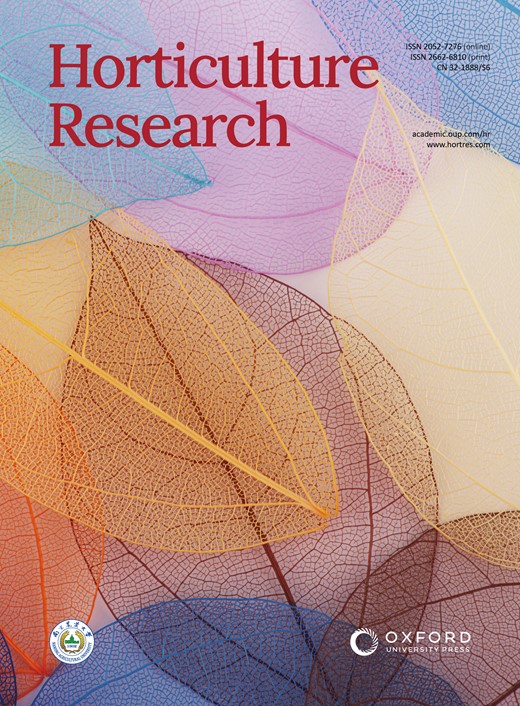Cysteine-rich receptor-like secreted protein 1 promotes intercellular infection and enhances nodulation in Aeschynomene indica
IF 8.5
1区 农林科学
Q1 Agricultural and Biological Sciences
引用次数: 0
Abstract
summary Nitrogen-fixing bacteria establish symbiotic relationships with their host plants via two different entry systems: root hair-mediated (intracellular) entry and intercellular entry. However, the molecular mechanisms underlying the intercellular entry system have received relatively little research attention. In this study, we compared the transcriptomes of the nodules and roots of Myrica rubra, which forms an ancient type of symbiosis with Frankia via intercellular entry. We found that cysteine-rich receptor-like secreted protein 1 (CRRSP1) was highly up-regulated in M. rubra nodules. We then investigated the function of MrCRRSP1 in Aeschynomene indica, which establishes symbiosis with Bradyrhizobium sp. ORS285 through an intercellular entry system. The overexpression of MrCRRSP1 and AiCRRSP1 in A. indica enhanced the nodule number and plant growth. Exogenous application of glutathione S-transferase (GST)-tagged MrCRRSP1 and AiCRRSP1 in A. indica promoted rhizobial attachment at cracks in the lateral root base, as well as rhizobial motility and biofilm formation. These results suggest that CRRSP1 promotes nodulation by enhancing rhizobial attachment to lateral root cracks. In addition to providing new insights into the molecular mechanisms underlying nodule formation through intercellular entry, this research enhances our understanding of actinorhizal plant–Frankia symbiosis.富含半胱氨酸的受体样分泌蛋白1促进细胞间感染并增强七叶麻结瘤
固氮细菌通过两种不同的进入系统与寄主植物建立共生关系:根毛介导的(细胞内)进入和细胞间进入。然而,细胞间进入系统的分子机制受到相对较少的研究关注。在这项研究中,我们比较了杨梅根瘤和根的转录组,杨梅通过细胞间进入与Frankia形成一种古老的共生类型。我们发现富半胱氨酸受体样分泌蛋白1 (CRRSP1)在红分枝杆菌结节中高度上调。然后,我们研究了MrCRRSP1在Aeschynomene indica中的功能,该基因通过细胞间进入系统与慢生根瘤菌sp. ORS285建立共生关系。MrCRRSP1和AiCRRSP1在籼稻中的过表达促进了根瘤数和植株生长。外源应用谷胱甘肽s -转移酶(GST)标记的MrCRRSP1和AiCRRSP1促进了籼稻侧根基部裂缝处的根瘤菌附着,以及根瘤菌的运动和生物膜的形成。这些结果表明,CRRSP1通过增强根瘤菌对侧根裂缝的附着来促进根瘤形成。除了为通过细胞间进入形成根瘤的分子机制提供新的见解外,该研究还增强了我们对放线根植物-法兰克菌共生的理解。
本文章由计算机程序翻译,如有差异,请以英文原文为准。
求助全文
约1分钟内获得全文
求助全文
来源期刊

Horticulture Research
Biochemistry, Genetics and Molecular Biology-Biochemistry
CiteScore
11.20
自引率
6.90%
发文量
367
审稿时长
20 weeks
期刊介绍:
Horticulture Research, an open access journal affiliated with Nanjing Agricultural University, has achieved the prestigious ranking of number one in the Horticulture category of the Journal Citation Reports ™ from Clarivate, 2022. As a leading publication in the field, the journal is dedicated to disseminating original research articles, comprehensive reviews, insightful perspectives, thought-provoking comments, and valuable correspondence articles and letters to the editor. Its scope encompasses all vital aspects of horticultural plants and disciplines, such as biotechnology, breeding, cellular and molecular biology, evolution, genetics, inter-species interactions, physiology, and the origination and domestication of crops.
 求助内容:
求助内容: 应助结果提醒方式:
应助结果提醒方式:


